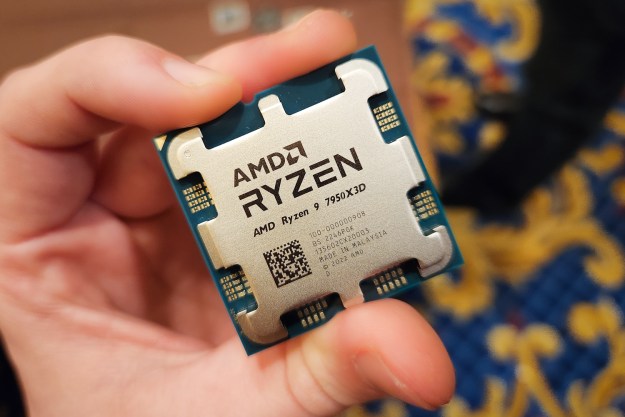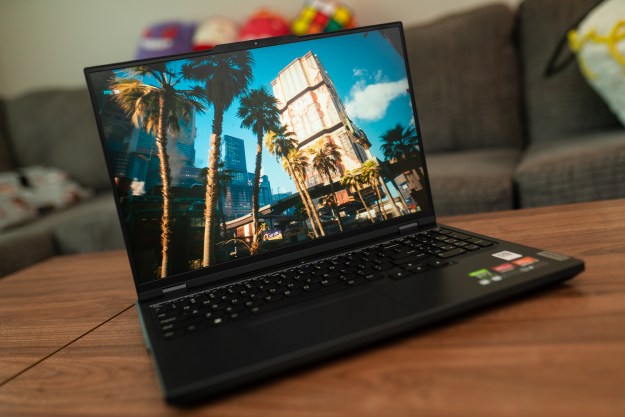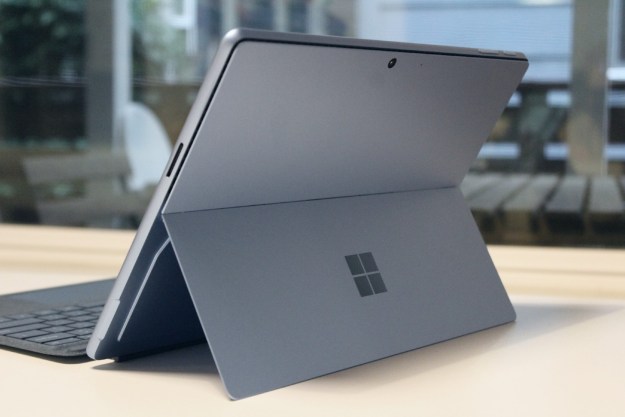Microsoft’s Surface line encompasses a number of different designs and it would be understandable if you felt like it has too many options to sort through. But shopping for a new laptop doesn’t have to be so difficult, especially when you have our handy comparison guide below to help you make sense of your options when it comes to shopping for Microsoft’s flagship laptop series.
In this guide, we’ll take a closer look at two Surface product lines: the Surface Pro and the Surface Laptop. We’ll discuss their respective designs, use cases, and price ranges — and in turn, you’ll get a better sense of which Surface machine will work best for your lifestyle, computing needs, and budget.
Surface Laptops

The latest available models of the Surface Laptop line are the Surface Laptop 3 and the Surface Laptop 4.
Surface Laptop 4
The Surface Laptop 4 comes in two sizes: 13.5 inches and 15 inches. These laptops are outfitted with an aluminum chassis, backlit keyboards, touchscreens, HD cameras, omnisonic speakers featuring Dolby Atmos support, and displays with 3:2 aspect ratios. They have support for the Surface Pen, incorporate dual far-field Studio Mics, and have a selection of ports that include: USB-C, USB-A, Surface Connect, and a 3.5mm headphone jack. Both sizes of the Surface Laptop 4 offer displays with 201 pixels per inch, but their resolutions vary: the 13-inch has a 2256 x 1504 resolution and the 15-inch has a 2496 x 1664 resolution.
Internal components vary depending on the size and configuration you pick, but all of the options are fairly strong. They include quad-core 11th-generation Intel Core i5 or i7 processors, AMD Ryzen 5 or 7 4000 processors, up to 32GB of RAM, up to 1TB of solid-state drive (SSD) storage, and either metal or Alcantara fabric palm rests. The Surface Laptop 4 is pretty lightweight overall with a range of just 2.79 pounds to 3.40 pounds. These laptops don’t have Thunderbolt ports and the bezels are a little thicker than many of their contemporaries.
Surface Laptop 3
The Surface Laptop 3 also comes in two sizes: 13.5 inches or 15 inches. If you opt to get one of these older generation Surface laptops, you can expect to see a product that still has a lot in common with the latest version, but the hardware is weaker. You’ll still get a laptop with an aluminum chassis, a backlit keyboard, an HD camera, dual far-field Studio Mics, touchscreen displays with 3:2 aspect ratios, support for Surface Pen, up to 1TB of SSD storage, and a selection of ports that includes: USB-C, USB-A, a Surface Connect port, and a 3.5mm headphone jack. There are also still options for metal or Alcantara fabric palm rests. AMD Ryzen 5 or 7 processors are still available too, though they’re from the 3000 series. Intel CPUs are restricted to the 10th generation, and you can only outfit them with up to 16GB of RAM. The Laptop 3s also lack Thunderbolt ports and narrow bezel displays, as well as Dolby Atmos speaker support. The display resolutions and pixels-per-inch for Surface Laptop 3s are the same as the Laptop 4s.
The weight range is still the same: 2.79 pounds to 3.40 pounds.
Surface Pro

The most recently available Surface Pro models are the Surface Pro 7 and the Surface Pro X.
Surface Pro 7
The Surface Pro 7 is a 2-in-1 laptop that requires you to purchase its keyboard (the Type Cover) separately. The Pro 7 only comes in one size, and is outfitted with a touchscreen display with a 3:2 aspect ratio, up to 16GB of RAM, up to 1TB of SSD storage, a 5.0MP front-facing camera with 1080p FHD video, an 8.0MP rear-facing camera with 1080p FHD video, dual far-field Studio Mics, 1.6W stereo speakers with Dolby Audio, a magnesium chassis, a built-in kickstand, and a selection of ports that includes: USB-C, USB-A, a 3.5mm headphone jack, a Surface Connect port, and a MicroSDXC card reader. The Surface Pro 7’s display has a resolution of 2736 x 1824 with 267 pixels per inch.
You’ll have a choice between three kinds of 10th-generation Intel Core processors: i3, i5, or i7. The i5 and i7 are quad-core processors while the i3 is a dual-core processor. Surface Pro 7s also come with four sensors: ambient light, an accelerometer, a gyroscope, and a magnetometer. The total weight of Surface Pro 7 varies depending on the processor you choose and falls into the following ultra-lightweight range: 1.70 pounds to 1.74 pounds. (These weights don’t include the Type Cover.)
Surface Pro X
The Surface Pro X is another 2-in-1 offering from Microsoft. It also only comes in size: 13 inches. Its display is unique among the others in this guide because along with a 3:2 aspect ratio and touchscreen, it also has narrow bezels. The display’s resolution is 2880 x 1920. And it has 267 pixels per inch, just like the Pro 7’s display; which means you’ll get more PPI with a Surface Pro than with a Surface Laptop.
With the Surface Pro X, you’ll also get up to 16GB of RAM, up to 512GB of SSD storage, a 5.0MP front-facing camera with 1080p FHD video, a rear-facing 10MP camera with 1080p HD and 4K video, support for LTE connectivity, dual far-field Studio Mics, 2W stereo speakers with Dolby Audio, an anodized aluminum chassis, and a built-in kickstand. You’ll need to purchase its keyboard separately. But you’ll have a choice between two processors: A Microsoft SQ 1 or SQ 2. You’ll also find a selection of ports that includes: USB-C, a Surface Connect port, a Surface Keyboard port, and a Nano SIM. There is no USB-A port. The Pro X also has four sensors: an accelerometer, a gyroscope, a magnetometer, and an ambient light sensor. Without the keyboard, it’s only 1.7 pounds.
Best use cases for Surface Laptops
Surface Laptops are best for people who just want a great general-purpose laptop that can handle productivity tasks, web browsing, and streaming movies and shows. They’re not dedicated workstations or gaming PCs. These
Our recent review of the Surface Laptop 4 confirmed that it’s not a gaming PC or workstation, but we were overall pleased with the performance of its display and speakers when used for entertainment use cases.
Best use cases for Surface Pro
Here’s where it gets interesting: the Surface Pro line can be used as a general-purpose laptop like the Surface Laptop line, but it really shines as a portable work PC for remote workers or those who travel frequently. Overall, the Surface Pro series is best for someone who wants to work and unwind on the go. With features such as support for LTE connectivity, speakers with Dolby Audio, dual far-field microphones, and cameras with up to 4K video, you’ll be able to hop on a video call and collaborate with your team anywhere.
But portability is the Surface Pro series’ main selling point, and so if you need an ultra-lightweight 2-in-1 PC option, get a Surface Pro 7 or Pro X.
How much do they cost?
A Surface Laptop 3, at its cheapest configuration, costs $1,000. A Surface Laptop 4, has a price range of $1,000 to $2,400.
A Surface Pro 7 starts at $749 and ends at $2,300, and that’s before you add a Type Cover, which can range in price from $130 to $160.
A Surface Pro X starts at $1,000 and ends at $1,800. But that’s before you add a keyboard and a Surface Slim Pen, which cost $140 and $145, respectively.
Overall, the Surface Pro series has more affordable options, but if you buy one, you’ll still have to pay extra for accessories that are pretty much required if you want to take full advantage of these PCs.
Which one should you buy?
If you need a machine for work, you can really buy either a Surface Laptop or a Surface Pro as they’ll both do well with productivity. But if you specifically need an ultra-portable work PC, Surface Pro PCs are the better buy — they’re lighter, and they’ll still help you get your work done and help you relax later. But bear in mind that you’ll need to purchase a Type Cover or separate keyboard to get the most out of it.
If you just need a solid, all-purpose laptop for work and play and portability isn’t a concern: Get a Surface Laptop. It’s heavier than a Surface Pro but it’s nowhere near the heaviest laptop on the market. Plus, you won’t have to buy a keyboard for it. And with the Surface Laptop 4, you’ll get the latest Intel Core processors. With the Surface Pro line, you’ll have to deal with either only Microsoft SQ processors or earlier (tenth) generation Intel Core processors.
Editors' Recommendations
- The best MacBook to buy in 2024
- Laptop buying guide: what to look for in 2024
- Dell vs. HP: Which laptop brand is best for your needs?
- The thinnest laptops you can buy in 2024
- These are the best AMD laptops you can buy in 2024


